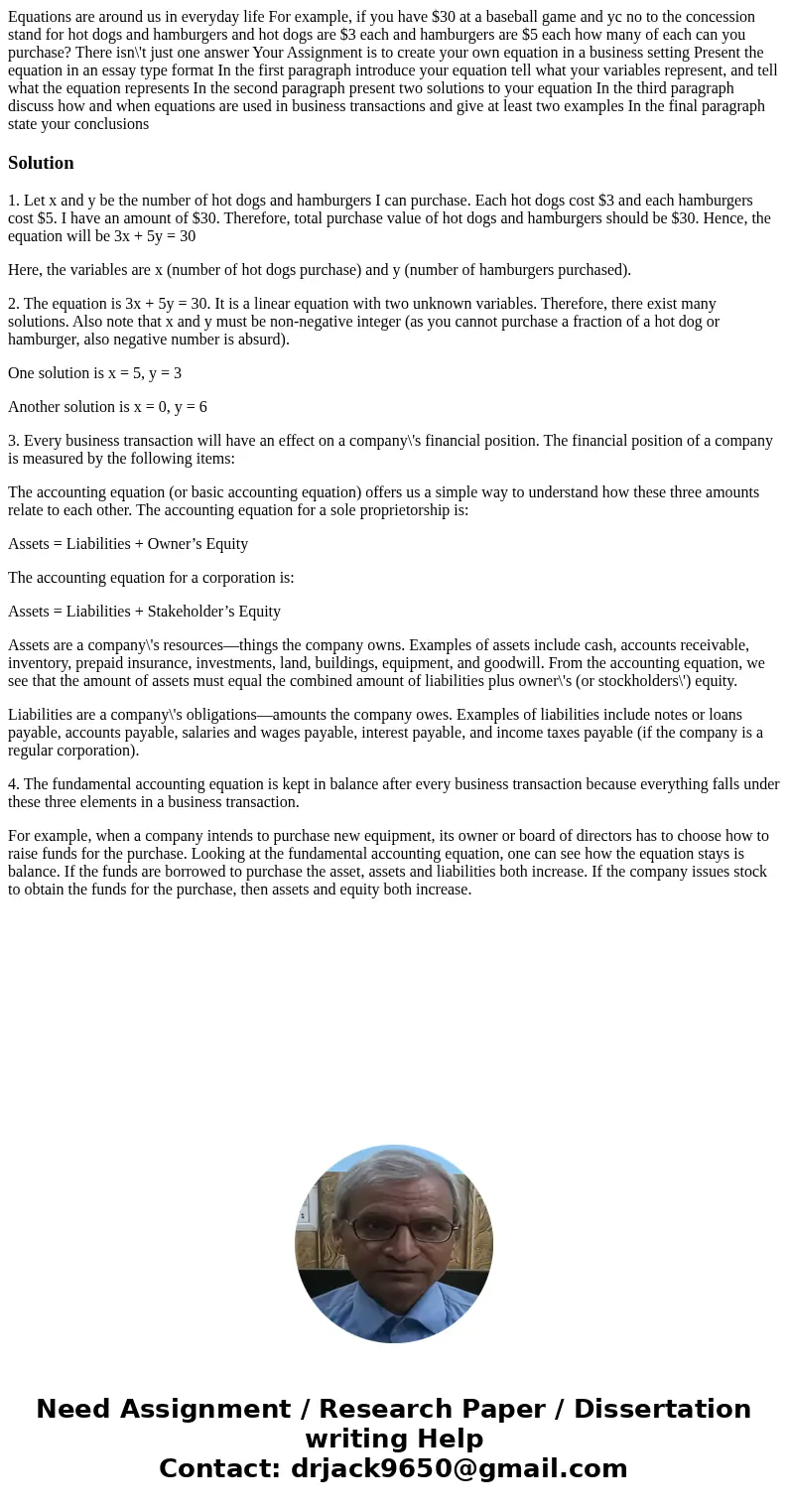Equations are around us in everyday life For example if you
Solution
1. Let x and y be the number of hot dogs and hamburgers I can purchase. Each hot dogs cost $3 and each hamburgers cost $5. I have an amount of $30. Therefore, total purchase value of hot dogs and hamburgers should be $30. Hence, the equation will be 3x + 5y = 30
Here, the variables are x (number of hot dogs purchase) and y (number of hamburgers purchased).
2. The equation is 3x + 5y = 30. It is a linear equation with two unknown variables. Therefore, there exist many solutions. Also note that x and y must be non-negative integer (as you cannot purchase a fraction of a hot dog or hamburger, also negative number is absurd).
One solution is x = 5, y = 3
Another solution is x = 0, y = 6
3. Every business transaction will have an effect on a company\'s financial position. The financial position of a company is measured by the following items:
The accounting equation (or basic accounting equation) offers us a simple way to understand how these three amounts relate to each other. The accounting equation for a sole proprietorship is:
Assets = Liabilities + Owner’s Equity
The accounting equation for a corporation is:
Assets = Liabilities + Stakeholder’s Equity
Assets are a company\'s resources—things the company owns. Examples of assets include cash, accounts receivable, inventory, prepaid insurance, investments, land, buildings, equipment, and goodwill. From the accounting equation, we see that the amount of assets must equal the combined amount of liabilities plus owner\'s (or stockholders\') equity.
Liabilities are a company\'s obligations—amounts the company owes. Examples of liabilities include notes or loans payable, accounts payable, salaries and wages payable, interest payable, and income taxes payable (if the company is a regular corporation).
4. The fundamental accounting equation is kept in balance after every business transaction because everything falls under these three elements in a business transaction.
For example, when a company intends to purchase new equipment, its owner or board of directors has to choose how to raise funds for the purchase. Looking at the fundamental accounting equation, one can see how the equation stays is balance. If the funds are borrowed to purchase the asset, assets and liabilities both increase. If the company issues stock to obtain the funds for the purchase, then assets and equity both increase.

 Homework Sourse
Homework Sourse